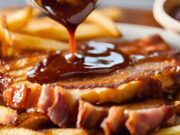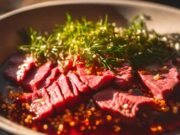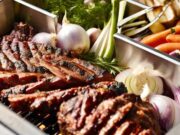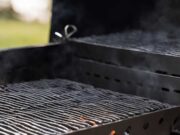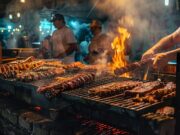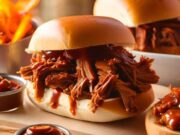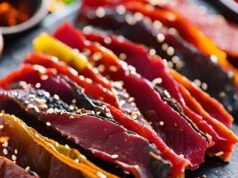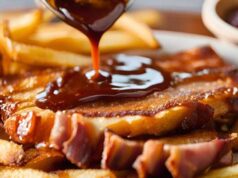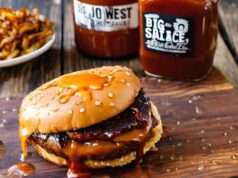Grilling the perfect BBQ steak is an art that combines technique, the right tools, and a bit of passion.
Whether you’re a seasoned grill master or a curious beginner, this guide will walk you through everything you need to know.
From selecting the ideal cut of meat to mastering the grilling process, essential tips and tricks will help elevate your steak game.
Get ready to impress your friends and family with mouthwatering, perfectly cooked steaks every time!
Key Takeaways:

- Choosing the right cut of steak is crucial for a perfect BBQ – consider factors like marbling and thickness to determine the best cut for grilling.
- Resting the steak after grilling allows the juices to redistribute, resulting in a more tender and flavorful steak.
- To achieve the perfect doneness, use a meat thermometer and follow recommended cooking times and temperatures for different cuts of steak.
Choosing the Right Cut of Steak
Selecting the appropriate cut of steak is essential for achieving optimal grilling outcomes, as each cut possesses distinct flavors, tenderness, and cooking characteristics that can significantly enhance the barbecue experience.
For instance, the rich marbling found in ribeye steaks imparts a robust and juicy flavor, while the buttery tenderness of filet mignon offers a luxurious eating experience. Additionally, other cuts such as sirloin and T-bone present various textures and taste profiles, making them favored choices for grilling. Sirloin provides a leaner option without compromising on flavor, whereas T-bone combines the tenderness of filet mignon with the substantial qualities of strip steak.
It is advisable to consider marinating the sirloin for an enhanced flavor profile or grilling the T-bone to emphasize its juicy attributes. Each cut plays a vital role in creating a gourmet steak experience, contributing to an unforgettable culinary journey.
Essential Tools for Grilling Steaks
Possessing the appropriate tools is crucial for enhancing the grilling experience, ensuring that steaks are cooked to perfection while maintaining safety and cleanliness throughout the process.
To initiate this culinary endeavor, a grill brush is essential for keeping grates free of residue, which allows for even cooking and improved flavor. Additionally, a reliable meat thermometer is critical, as it enables the griller to accurately assess the internal temperature of meats, thereby preventing overcooking and ensuring optimal juiciness.
The decision between using a charcoal or gas grill can significantly affect the final taste; charcoal imparts a rustic, smoky aroma, while gas offers convenience and precise control over heat levels. Equipped with these essential tools, anyone can elevate their grilling skills, impressing friends and family with flawlessly prepared meals.
Preparing the Steak for Grilling

Proper preparation of the steak prior to grilling is essential for achieving maximum flavor and tenderness, as it enables the meat to absorb the marinade and seasonings while reaching the ideal internal cooking temperature.
The process begins with selecting a high-quality cut of steak, which serves as the foundation for the meal. Following this, marinating the steak in a mixture of oil, acid, and herbs not only infuses it with flavor but also aids in tenderizing the meat.
After marination, it is crucial to remove excess moisture by patting the steak dry with paper towels; neglecting this step could hinder the formation of an appealing sear on the grill.
Once dried, a generous application of salt and pepper enhances the steak’s natural flavors, setting the stage for a delightful grilling experience.
These foundational steps significantly influence the final outcome, ensuring a juicy and flavorful piece of meat.
The Grilling Process
The grilling process necessitates a careful balance of timing and technique. It is essential to understand how to effectively utilize both direct heat and indirect heat in order to achieve the ideal grilled steak with the desired level of doneness.
Cooking Times and Temperatures
Understanding cooking times and temperatures is essential for achieving the desired doneness in steaks, which can vary from medium rare to well done. This process can be effectively monitored using a reliable meat thermometer.
This instrument not only ensures that the meat is cooked to the specified level but also helps to prevent the common error of overcooking. Steak doneness levels are generally classified as rare, medium rare, medium, medium well, and well done, each associated with specific internal temperatures; for example, medium rare reaches approximately 135°F, while well done is around 160°F.
To obtain an accurate measurement, the thermometer should be inserted into the thickest part of the steak, taking care not to touch any bones. Allowing steaks to rest for a few minutes after grilling promotes the redistribution of juices, resulting in a more flavorful and tender piece of meat.
Resting and Serving the Steak

Resting the steak after grilling is an essential practice that allows the juices to redistribute throughout the meat, resulting in a flavorful and juicy steak upon serving.
It is typically recommended to let the steak rest for a minimum of 5 to 10 minutes, depending on its thickness. This straightforward technique not only enhances the texture but also ensures that each bite remains exceptionally tender. Rested meat is less likely to lose moisture when sliced, thereby providing an overall more satisfying dining experience.
When serving, one might consider enhancing the dish further by pairing the steak with sautéed mushrooms cooked in garlic and herbs or by adding a dollop of herbed butter that melts over the warm surface, contributing an additional layer of richness.
For a refreshing variation, one could also explore the option of a steak salad topped with vibrant greens and a preferred dressing, creating a delightful contrast that is both heartwarming and pleasing to the palate.
Common Grilling Mistakes to Avoid
Avoiding common grilling mistakes can significantly enhance the steak grilling experience, ensuring maximum flavor and tenderness from the meat.
By adhering to several key practices, the grilling enthusiast can refine their skills. For example, overcrowding the grill may result in uneven cooking and produce steam instead of achieving the desirable sear and grill marks. It is crucial to provide adequate space for each piece of steak.
Establishing a proper preheating routine is essential; starting with a hot grill aids in achieving the coveted caramelization. It is advisable to resist the temptation to overcook, as utilizing a meat thermometer can help ensure the ideal level of doneness while preserving the meat’s juicy flavors.
By following these concise recommendations, grilling can transform into a pleasurable and rewarding endeavor, allowing the natural flavors of the steak to shine through.
Frequently Asked Questions
What type of steak should I use for grilling?

The best steaks for grilling are ribeye, striploin, and tenderloin. These cuts have more fat content, making them more flavorful and tender when cooked on the grill.
How should I season my steak before grilling?
For a classic and simple seasoning, use kosher salt, black pepper, and garlic powder. You can also use a dry rub or marinade for added flavor. Just be sure to not over-season, as it can overpower the natural flavors of the steak.
How do I achieve the perfect grill marks on my steak?
To achieve those perfect grill marks, preheat your grill to high heat and make sure the grates are clean and well-oiled. Place your steak diagonally on the grill for a few minutes, then rotate it 90 degrees to create the crosshatch pattern.
How do I know when my steak is cooked to my liking?
The best way to determine doneness is to use a meat thermometer. For rare, the internal temperature should be 130-135°F, medium-rare is 135-140°F, medium is 140-145°F, medium-well is 150-155°F, and well done is 160°F and above.
Should I let my steak rest before slicing and serving?
Yes, it is important to let your steak rest for about 5-10 minutes before slicing and serving. This allows the juices to redistribute and results in a more flavorful and tender steak.
Can I grill frozen steaks?
Yes, you can grill frozen steaks, but it is not recommended. It is best to thaw the steak completely before grilling to ensure even cooking and to avoid any potential food safety concerns.








